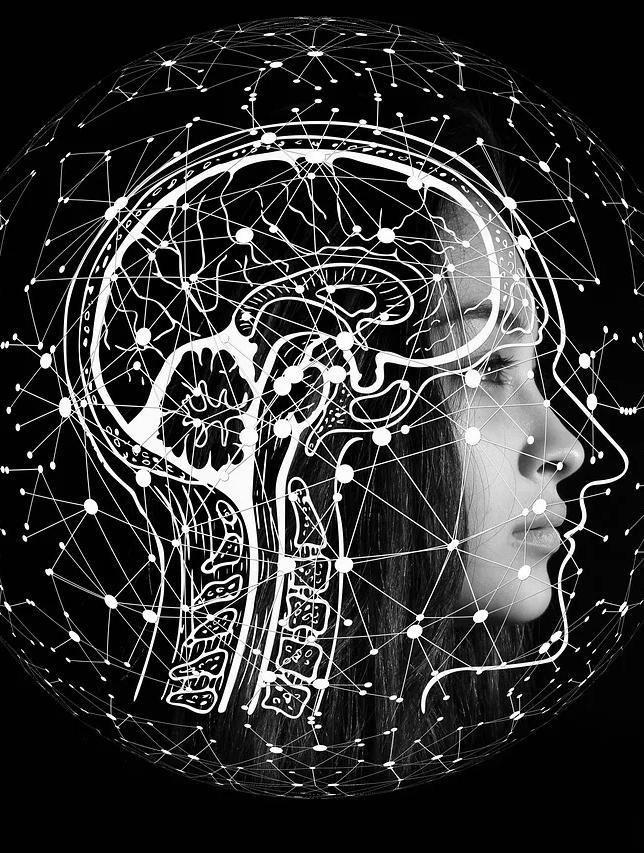
3 minute read
Emerging Technologies in Healthcare: AI-powered Diagnostics, Telemedicine, Wearable Health Devices, and Robotics in Surgery
from PULSE Fall 2023
by Fareen Dhuka
By Hermela Selam
Edited By Ella Chen
Advertisement
Emerging Technologies in Healthcare: Revolutionizing Patient Care
In the ever-evolving landscape of healthcare, technological advancements play a pivotal role in transforming the way we approach diagnostics, patient care, and medical procedures. This article explores four key emerging technologies that are reshaping the healthcare industry: AI-powered diagnostics, telemedicine, wearable health devices, and robotics in surgery.
AI-powered Diagnostics: Unleashing the Potential of Artificial Intelligence
Artificial Intelligence (AI) has emerged as a game-changer in healthcare diagnostics, revolutionizing the accuracy and efficiency of medical assessments. AI algorithms, trained on vast datasets, can analyze medical images, pathology reports, and patient records at a speed and precision that surpass human capabilities. This not only expedites the diagnostic process but also enhances the early detection of diseases.
AI-powered diagnostics have proven particularly effective in fields like radiology. Machine learning models can swiftly identify anomalies in medical images, aiding radiologists in detecting conditions such as cancer or fractures with unprecedented accuracy. The ability of AI to sift through extensive data quickly not only expedites the diagnostic process but also reduces the chances of human error.
Moreover, AI is not confined to static diagnostics; it is increasingly being utilized in dynamic assessments. Predictive analytics powered by AI can analyze patient data to identify individuals at risk of specific conditions, allowing for targeted preventive interventions. This proactive approach to healthcare holds the promise of reducing the overall burden of diseases and improving population health.
Telemedicine: Bridging Gaps in Healthcare Accessibility
Telemedicine has emerged as a transformative force, breaking down geographical barriers and increasing access to healthcare services. With the ubiquity of smartphones and high-speed internet, patients can now consult with healthcare professionals remotely, reducing the need for physical visits to healthcare facilities.
Especially significant in rural or underserved areas, telemedicine facilitates timely medical consultations and follow-ups. Patients with chronic conditions can benefit from regular virtual check-ins, ensuring continuity of care without the logistical challenges of frequent hospital visits. The integration of telemedicine into healthcare systems not only enhances accessibility but also promotes preventive care and early intervention.
Furthermore, telemedicine extends beyond consultations to include remote monitoring of patients. Wearable health devices, discussed later in this essay, can transmit real-time data to healthcare providers, enabling them to track patients’ vital signs and make informed decisions about their care. This holistic approach to remote healthcare delivery has proven particularly valuable during global health crises, ensuring ongoing care while minimizing exposure to infectious diseases.
Wearable Health Devices: Empowering Patients with Real-time Data
The advent of wearable health devices marks a paradigm shift in patient engagement and monitoring. From fitness trackers to smartwatches equipped with health sensors, these devices provide individuals with real-time data about their well-being. The continuous monitoring of vital signs, physical activity, and sleep patterns enables users to take a proactive approach to their health.
Wearable health devices are not only empowering individuals but are also proving instrumental in preventive healthcare. For instance, they can alert users and healthcare professionals to irregularities in heart rate or detect patterns indicative of potential health issues. This proactive monitoring allows for early intervention, reducing the severity of certain conditions and preventing complications.
Moreover, the data generated by these devices contributes to a wealth of information that can inform population health strategies. Aggregated and anonymized data from wearable devices can provide valuable insights into lifestyle trends, disease prevalence, and the effectiveness of public health interventions. Harnessing this data has the potential to shape more targeted and personalized healthcare approaches, optimizing resources and improving health outcomes. Surgeons can navigate intricate anatomical structures with greater precision, reducing trauma to surrounding tissues. Additionally, robotics allows for remote surgery, enabling expert surgeons to operate on patients located in different geographical locations.
The benefits of robotics in surgery extend beyond the operating room. The minimally invasive nature of robotic procedures often results in shorter hospital stays, quicker recovery times, and reduced post-operative pain for patients. Surgeons, aided by robotic systems, can perform intricate procedures with greater control and visualization, pushing the boundaries of what was once deemed surgically possible.
Conclusion: A Technological Renaissance in Healthcare
outcomes on a broader scale.
Robotics in Surgery: Precision and Innovation in the Operating Room
The integration of robotics in surgery represents a significant leap forward in the precision and safety of medical procedures. Robotic surgical systems, controlled by skilled surgeons, offer enhanced dexterity and precision, minimizing invasiveness and accelerating recovery times. These systems typically involve a console where the surgeon sits, a robotic arm system, and specialized instruments.
In procedures ranging from minimally invasive surgeries to complex interventions, robotics has demonstrated its ability to enhance
The convergence of AI-powered diagnostics, telemedicine, wearable health devices, and robotics in surgery heralds a new era in healthcare. These technologies are not just tools; they represent a profound shift in how we approach healthcare delivery, diagnostics, and patient engagement. As these technologies continue to mature, their collective impact is likely to redefine healthcare systems worldwide, making them more accessible, patient-centric, and technologically advanced. Embracing these innovations is not merely an option but a necessity as we navigate the complexities of modern healthcare and strive for a healthier future.







